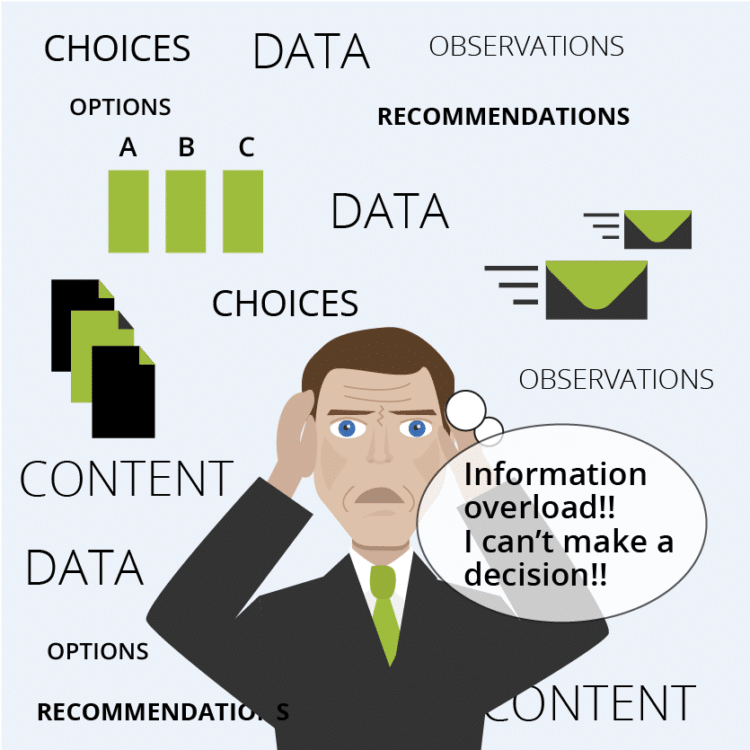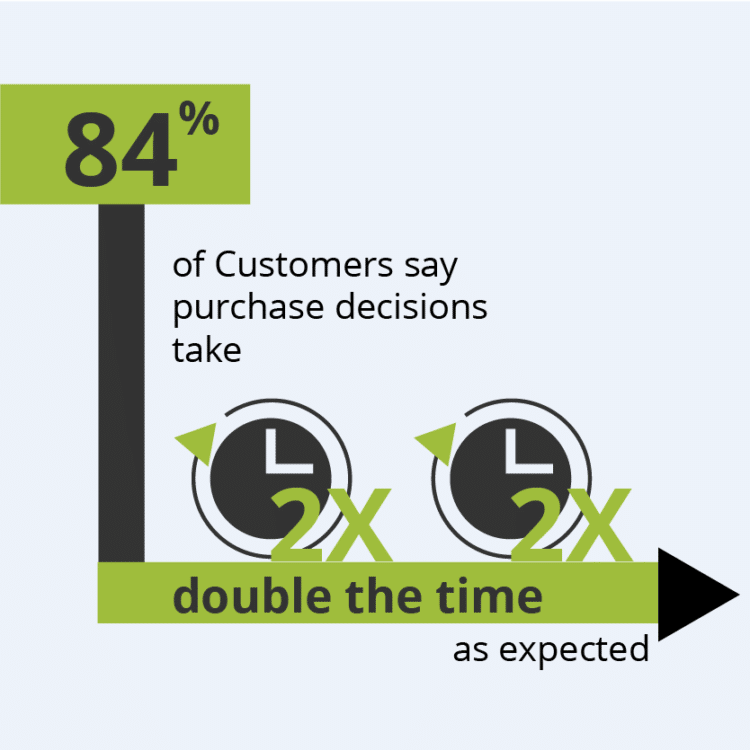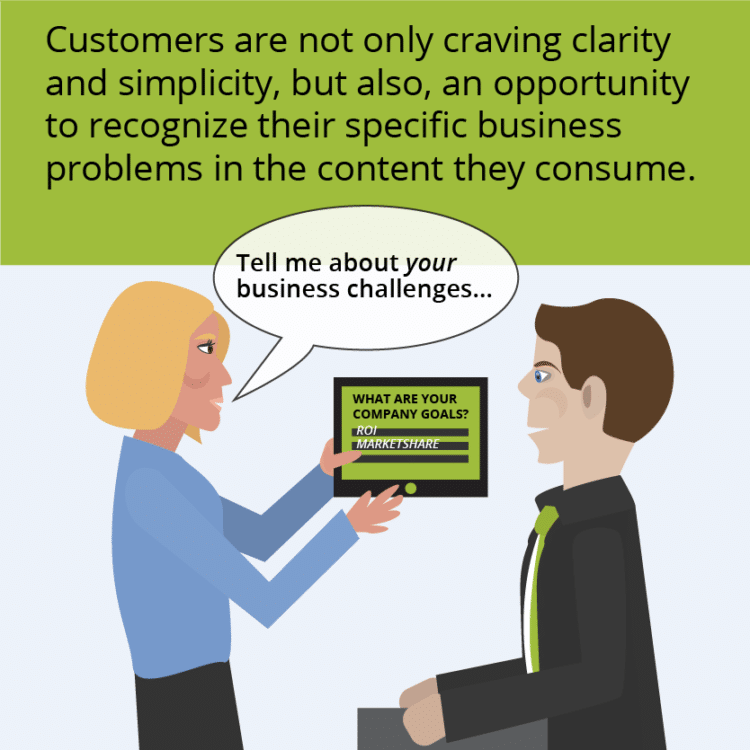

The Myth of More
Recent Gartner research found that information overload is not only overwhelming for buyers, it’s potentially paralyzing. While accessible information has led buyers to feel more empowered than ever, the purchasing process has become significantly delayed. Eighty four percent of surveyed customers reported a longer (nearly double the time) purchase process than they expected. The more options buyers face, the more difficult it is for them to focus on unique business challenges and make informed decisions. While your customers are making complex solution purchases, they are constantly inundated with choices, observations, recommendations, and ultimately, noise.
When it comes to these three facets of the modern B2B buying process, less is more:
2) Data: Data that solves problems not only has an impact on buying decisions, it can help speed up the process. According to Forrester Research, 74% of business buyers are inclined to buy from sellers that provide a new insight about their business.
3) Options: A Harvard Business Review study found that when presented with numerous choices, some stakeholders will always perceive the possibility of a better option. Even post-purchase, up to 40% of stakeholders second-guess their decisions.

The Sales Enablement Prescription for Content Fatigue
Nearly 70% of your product information is self-discovered online by B2B buyers, leaving little opportunity for selling that actually closes deals. The unrelenting flow of information and subsequent number of options has created a stressful, complex buying experience. Also, the number and functional diversity of stakeholders involved in the buying decision has increased, contributing to delays. Today, customers are not only craving clarity and simplicity, but also, an opportunity to recognize their specific business problems in the content they consume. Implementing a sales enablement solution can help you cut through the noise and have consultative, prescriptive discussions with customers to better understand the business challenges of all stakeholders, allowing you to manage competing priorities and align goals along the way.
In other words, sales enablement technology makes it personal again. How?
Sales Enablement Technology takes content from static to interactive: Customers no longer have to sift through content to find themselves and their business problems. Sales enablement technology means you can focus on customers as individuals, proactively addressing their needs with the right content at the right time in the buying process.
Sales Enablement is data-driven: When sales enablement technology is backed by artificial intelligence, sellers can provide targeted sales content and customized presentations (in real-time) that focus on how to fix the customer’s problem. When data is involved, sellers can lean on key insights, instead of gut instinct, alone.
Sales Enablement Technology helps you differentiate yourself in a crowded market: Client-specific data and insights at your fingertips allow you to prescribe a specific course of action for prospects, rather than offering them generic packages. With content and data that tells the prospect’s unique story, a clear and concise decision isn’t far behind.
It’s unlikely that the B2B purchase process will ever lose its complexity and clamor. Yet, adopting a sales enablement technology solution can help turn down the volume, allowing you to guide buyers with data-driven, client-specific insights that inspire action and propel deals forward. To learn more about Mediafly’s Evolved Selling™ solution, visit www.mediafly.com/evolved-selling.
Sources:
1. Gomez, Nicholas Toman, Brent Adamson, Cristina. “The New B2B Sales Imperative.” Harvard Business Review, 19 Sept. 2017, hbr.org/2017/03/the-new-sales-imperative.
2. Stevens, Ruth P. “Mounting Dysfunction in the B2B Buying Process.” Target Marketing, 10 Jan. 2018, www.targetmarketingmag.com/post/sell-buyers-cant-buy-mounting-dysfunction-b2b-buying-process/all/.
3. Heuer, Megan. “Three Myths of the ‘67 Percent’ Statistic.” SiriusDecisions, www.siriusdecisions.com/blog/three-myths-of-the-67-percent-statistic.

Comments are closed.